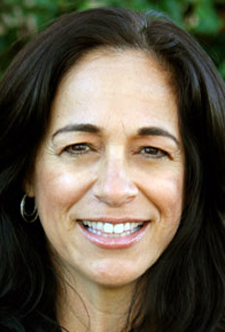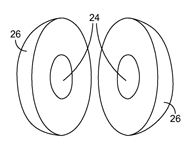 The Phase Change Matters e-mail newsletter is a weekly summary of the latest news and research on phase change materials and thermal energy storage. To subscribe, visit www.puretemp.com/subscribe. For more frequent updates, follow @puretemp on Twitter or visit the Phase Change Matters blog, www.puretemp.com/pcmatters.
The Phase Change Matters e-mail newsletter is a weekly summary of the latest news and research on phase change materials and thermal energy storage. To subscribe, visit www.puretemp.com/subscribe. For more frequent updates, follow @puretemp on Twitter or visit the Phase Change Matters blog, www.puretemp.com/pcmatters.
PHASE CHANGE MATERIALS
Sunamp begins production of PV thermal battery systems in Scotland
“The cells use phase change materials that melt and release heat when needed – melting at around 58 degrees centigrade. Sunamp claims that in contrast to a normal domestic PV system, which exports a large portion of its generated power, the heat battery allows the system user to consume as much as 80% of the PV power as converted heat energy.”
Sustainability firm’s CEO spreads the word on PCMs
 Kristen Victor, the founder and CEO of a San Diego firm that advises commercial builders on sustainable technologies, is helping others understand how phase change materials can improve building performance. In an interview with the San Diego Union-Tribune, she describes how Sustainability Matters helped to develop passive cooling systems for a U.S. Olympic archery training center and a passive house in San Diego County:
Kristen Victor, the founder and CEO of a San Diego firm that advises commercial builders on sustainable technologies, is helping others understand how phase change materials can improve building performance. In an interview with the San Diego Union-Tribune, she describes how Sustainability Matters helped to develop passive cooling systems for a U.S. Olympic archery training center and a passive house in San Diego County:“We worked to incorporate a new technology called BioPCM, a specially formulated material that is installed within the roof and exterior walls. BioPCM naturally absorbs excess heat during the day, stores it, and then releases it at night. This passive solution helps minimize the need for energy-intensive heating, ventilation and air conditioning systems. As a result, the Easton Archery Center, located in Chula Vista, maintains an internal temperature of 75 degrees without the use of air-conditioning. …
“Most of our solutions are applicable in both commercial and residential settings. Sustainability Matters recently teamed with Alliance Green Builders to build a passive house in North County called Casa Aguila. It’s the most advanced home ever built in San Diego County. It features an onsite wastewater treatment system, BioPCM phase change material, a rainwater collection system, solar water heating and several other innovative systems and technologies.”
AWARDS
RGEES blood-specimen shipper wins cost-efficiency award
RGEES won an Excellence Award for Best Cost Efficiency Project at last week’s Cold Chain Global Forum in Boston. The North Carolina-based company, manufacturer of savENRG PCM products, was honored for its new ambient shipper, Standard 71. Developed jointly by RGEES and Paradigm Design Solutions Inc., the reusable “small-box” shipper uses salt-hydrate phase change material to keep blood specimens between 15° C to 25° C for 48 hours.
NEW PRODUCTS
Carpenter Ltd.’s new bedding products use Thermic phase change technology
UK-based Carpenter Ltd. has launched a “next generation” line of temperature-regulating bedding products. “Climate Collection” memory foam mattresses, pillows and toppers employ Thermic phase change technology. The bedding responds to temperature changes by absorbing, storing and releasing heat to keep the temperature close to the skin “within a ‘comfort zone’ of 28-30º Celsius for longer than standard products.” Devan Chemicals of Belgium developed the PCM microencapsulation technology.
THERMAL ENERGY STORAGE
Sand-based thermal energy storage system wins Australian grant
Latent Heat Storage has been awarded a $400,000 (AUD) grant from the Australian government to help launch its sand-based thermal energy storage system on the international market. The Adelaide-based company’s system, based on the latent heat properties of silicon derived from sand, is designed to complement intermittent energy sources such as wind and solar.
According to a report in RenewEconomy, the system “can provide energy storage on an industrial scale, up to several hundred megawatt hours – enough to power around 7,000 homes for a day; and is also small enough to fit inside a 20-foot shipping container, making it suitable for both on- and off-grid applications.”
Ice Energy to offer PV/TES system called ‘Solar + Ice’
Ice Energy plans to begin marketing “Solar + Ice,” a combined photovoltaic and thermal energy storage system.
The company’s behind-the-meter Ice Bear system stores thermal energy in the form of ice at night, when demand for power is low. The combined system uses excess solar energy to create ice during the day, with the Ice Bear providing cooling in late afternoon and early evening hours as solar generation tapers off.
The Santa Barbara, Calif., company says it is partnering with leading solar companies such as NRG Energy on the new system. It will be available to utilities through long-term power purchase agreements that guarantee performance.
“Solar has proven itself to be a low-cost, reliable and green generation resource, but its intermittent nature has limited its value to the grid,” said CEO Mike Hopkins. “Until now, the missing piece has been cost-effective and reliable storage. Our new bundle solves the problem.”
Concrete-based TES pilot project results expected this month
EnergyNest is expected to announce the results of its concrete-based thermal energy storage pilot project in Abu Dhabi this month. Energy Storage Report‘s Jason Deign says concrete might be “the ace up the sleeve” for the Norwegian company and others pursuing similar forms of solar TES. Among the advantages:
“In terms of supply chain, handling and construction, few materials are likely to be as cost effective, easy to obtain and simple to use. Concrete has decent thermal properties and is less likely than loose TES substrates, such as gravel, to suffer from thermal ratcheting. This is where the substrate packs itself into the bottom of the storage tank after repeated heating and cooling cycles cause the material to expand and contract.”
Three energy storage pioneers take different approaches
Ice Energy is one of three energy storage “pioneers” profiled in the Los Angeles Times this week.
The three companies take different approaches to storing energy for use when the sun doesn’t shine and the wind doesn’t blow. Sonnenbatterie makes a refrigerator-size lithium-ion battery that can power a home for up to two weeks. NEC Energy Solutions makes huge grid-scale batteries for utilities such as Southern California Edison.
Ice Energy has partnered with Southern California Edison to provide 26 megawatts of behind-the-meter thermal storage. The Times explains how Ice Energy’s Ice Bear system works:
“On the outside it looks like any other metal box on the roof of some commercial building.
“Inside the unit is an ice maker for which the water needs changing just once every 20 years. The ice is frozen at night, when commercial electricity rates are likely to be lower. When it gets hot the next day, the air conditioner’s energy-hog compressor shuts down, and cold water from the Ice Bear is fed into the air-conditioning unit for cooling. The water then recycles back to the Ice Bear.
” ‘It’s those air-conditioning units that create spikes on the grid,’ said [Mike] Hopkins, Ice Energy’s chief executive.
“Basically, the Ice Bear, known as a thermal storage unit, saves electricity during peak demand times, when electricity is most expensive. It doesn’t replace air conditioners but helps them operate more efficiently.”
PATENTS
Encapsulation of thermal energy storage media
 U.S. patent application 20150284616 (applicant University of South Florida, Tampa, Fla.):
U.S. patent application 20150284616 (applicant University of South Florida, Tampa, Fla.):
“In one embodiment, a phase change material is encapsulated by forming a phase change material pellet, coating the pellet with flexible material, heating the coated pellet to melt the phase change material, wherein the phase change materials expands and air within the pellet diffuses out through the flexible material, and cooling the coated pellet to solidify the phase change material.”
RESEARCH ROUNDUP
For our full list of recent academic research, see puretemp.com/academic. Here are highlights from the past week:
From Thermochimica Acta:• Fabrication, thermal properties and thermal stabilities of microencapsulated n-alkane with poly(lauryl methacrylate) as shell
From Procedia Engineering:
• Thermal Performance of a New Type of Phase Change Material Room in Summer and Winter
• Design of Phase Change Material Wall Based on the Heat Transfer Characteristics in Summer
• Simulation for a New Type of Photovoltaic (PV) Fresh Air and Domestic Hot Water System
From Applied Energy:
• A novel solid–gas thermochemical multilevel sorption thermal battery for cascaded solar thermal energy storage
From Applied Thermal Engineering:
• Experimental investigation on thermal performance of phase change material coupled with closed-loop oscillating heat pipe (PCM/CLOHP) used in thermal management
• Parameter effect of a phase change thermal energy storage unit with one shell and one finned tube on its energy efficiency ratio and heat storage rate
From Journal of Industrial Textiles:
• The thermal protection and comfort properties of aerogel and PCM-coated fabric for firefighter garment
From Energy Policy:
• On generation-integrated energy storage
NETWORKING
Connect with PCM experts and industry leaders on LinkedIn
More than 375 of your peers have joined a new LinkedIn group devoted to the discussion of phase change material and thermal energy storage. The Phase Change Matters group is an interactive complement to the blog and newsletter of the same name.
You are invited to join the group and connect with PCM and TES experts from around the world. New members this week include Devendra Jain, director at Pluss Advanced Technologies; Abby Meuser-Herr, an architectural designer at LHB Minneapolis; and Carlos Amaro, senior engineering design technician at Rice University.
YOUR TURN
Got a question about PCMs or TES? Ask our experts
Two Entropy Solutions advisors, Dr. Mohammed Farid of the University of Auckland and Lucas B. Hyman of Goss Engineering, are ready to answer your questions about phase change material and thermal energy storage. We’ll select the best questions sent to inquiries@puretemp.com and post the answers here each Friday.